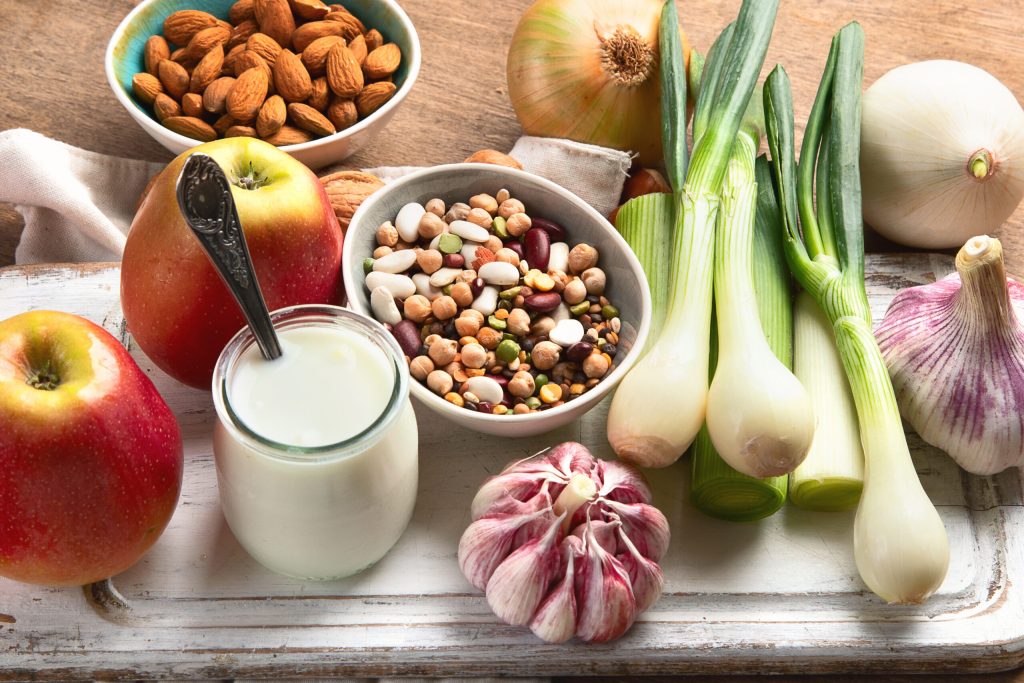For centuries, we have treated the body as a collection of separate systems: the digestive system, the nervous system, the integumentary system (skin). Modern medicine, however, is revealing a profound and intricate interconnectedness that challenges this fragmented view. At the center of this new understanding is the gut microbiome—a vast, dynamic ecosystem of trillions of bacteria, viruses, and fungi residing in our intestines. Once considered merely passive passengers involved in digestion, we now know these microbes are active conductors of our overall health, with a particularly powerful influence on two seemingly disparate areas: our skin and our mood. The question is no longer if gut health affects our complexion and emotional state, but how this remarkable dialogue occurs and what we can do to influence it.
This exploration delves into the cutting-edge science that links the gut, the skin, and the brain, forming what is known as the gut-skin-brain axis. We will dissect the mechanisms of the microbiome-skin axis, investigate the role of probiotics as modulators of this system, and uncover the central, unifying player in this process: systemic inflammation. By understanding these connections, we can move beyond topical-only solutions and embrace a more holistic, inside-out approach to wellness.
The Internal-External Link: Unpacking the Microbiome-Skin Axis
The concept of the “gut-skin axis” describes the constant, bidirectional communication between the gut’s microbial community and the skin. This connection is not merely theoretical; it is a complex network of biochemical signaling pathways that explains why gastrointestinal disorders so frequently present with concurrent skin issues. The health of one is a direct reflection of the health of the other.
The mechanisms through which the gut microbiome influences the skin are multifaceted:
- Systemic Metabolite Production: The gut microbes are tiny chemical factories. They digest dietary fibers and other compounds we cannot break down ourselves, producing a plethora of postbiotic metabolites. Among the most crucial are short-chain fatty acids (SCFAs) like butyrate, propionate, and acetate. SCFAs are absorbed into the bloodstream and exert systemic anti-inflammatory effects. They help strengthen the skin’s barrier function, regulate its lipid production, and calm underlying inflammation that manifests as redness, eczema, or psoriasis. A gut lacking in SCFA-producing bacteria can leave the skin more vulnerable to irritation and imbalance.
- Immune System Education and Modulation: Approximately 70-80% of our immune cells reside in the gut-associated lymphoid tissue (GALT). The gut microbiome is the primary trainer of this immune system, teaching it to distinguish between friend and foe. A diverse, balanced microbiome promotes immune tolerance, ensuring a measured response to threats. A disrupted microbiome (dysbiosis), however, can lead to an overzealous, chronically activated immune system. This systemic low-grade inflammation can readily manifest on the skin, triggering or exacerbating conditions like acne, rosacea, and atopic dermatitis. The gut, in essence, sets the inflammatory tone for the entire body, including the skin.
- Intestinal Permeability (“Leaky Gut”): The lining of our intestines is a selectively permeable barrier, designed to allow nutrients into the bloodstream while keeping harmful substances and undigested food particles out. A dysbiotic gut can damage the tight junctions holding this lining together, leading to increased intestinal permeability. When this barrier is compromised, pro-inflammatory molecules, bacterial fragments (like Lipopolysaccharides or LPS), and other toxins can “leak” into the systemic circulation. The body mounts a widespread immune response to these invaders, which directly fuels systemic inflammation. For the skin, this inflammatory onslaught can disrupt the skin barrier, increase sebum production, and promote the cascade of events that lead to breakouts, redness, and accelerated aging.

Cultivating the Garden: The Role of Probiotics and Prebiotics
Understanding the gut-skin-mood connection naturally leads to the question: how can we positively influence our internal ecosystem? The most direct tools at our disposal are probiotics and prebiotics, which function as seeds and fertilizer for our internal garden.
- Probiotics: These are live, beneficial bacteria that, when administered in adequate amounts, confer a health benefit. They work through several mechanisms:
- Competitive Exclusion: They compete with pathogenic (harmful) bacteria for space and resources on the gut lining, effectively crowding them out.
- Strengthening the Gut Barrier: Certain probiotic strains, such as Lactobacillus and Bifidobacterium, have been shown to stimulate the production of proteins that tighten the intestinal junctions, thereby reducing “leaky gut” and the subsequent systemic inflammation.
- Direct Anti-inflammatory Signaling: Probiotics can communicate with our immune cells in the GALT, encouraging them to produce more anti-inflammatory cytokines (like IL-10) and fewer pro-inflammatory ones (like TNF-alpha).
- Skin-Specific Benefits: Clinical studies have shown that specific probiotic strains can reduce acne lesion counts, improve skin hydration, and lessen the severity of eczema and rosacea by addressing the inflammatory root cause.
- Prebiotics: If probiotics are the seeds, prebiotics are the fertilizer. These are non-digestible fibers (such as inulin, fructooligosaccharides, and galactooligosaccharides) that serve as food for our beneficial gut bacteria. A diet rich in prebiotics—found in foods like garlic, onions, leeks, asparagus, and bananas—ensures that the good bacteria we consume or already have can thrive and multiply, leading to a more resilient and diverse microbiome.
The synergy between probiotics and prebiotics, often referred to as synbiotics, is the most powerful dietary approach to cultivating a healthy gut environment, which in turn calms inflammation and reflects positively on the skin.
The Unifying Thread: Inflammation Control as the Core Mechanism
If there is one single, central pathway through which gut health dictates both skin health and mood, it is the control of inflammation. Systemic inflammation is the common language spoken along the gut-skin-brain axis.
As detailed, a dysbiotic gut directly fuels a state of chronic, low-grade inflammation through increased intestinal permeability and misguided immune activation. This inflammatory state has a dual impact:
- On the Skin: Inflammation is the driving force behind virtually all chronic skin conditions. In acne, it propels a simple clogged pore into a red, painful pustule. In rosacea, it causes the characteristic flushing and visible blood vessels. In eczema, it drives the relentless itch and skin barrier breakdown. By calming systemic inflammation at its source—the gut—we can directly reduce the inflammatory fuel available to these skin conditions.
- On the Mood: The link between gut inflammation and mood is equally direct. The gut and brain are in constant communication via the vagus nerve, a major information superhighway. Furthermore, gut bacteria are involved in the production of a vast array of neuroactive substances:
- Neurotransmitter Production: Gut bacteria are prolific producers of key neurotransmitters. For instance, an estimated 90% of the body’s serotonin (a crucial regulator of mood, sleep, and appetite) and a significant portion of dopamine and GABA are produced in the gut.
- The Impact of Inflammation: When the gut is inflamed, this delicate biochemical production line is disrupted. Systemic inflammation can alter the metabolism of tryptophan (the precursor to serotonin), shunting it away from serotonin production and towards neuroinflammatory pathways. Inflamed immune cells also release pro-inflammatory cytokines that can cross the blood-brain barrier, directly triggering neuroinflammation. This process has been strongly implicated in the pathophysiology of depression and anxiety. The “gut feeling” is, therefore, a real biochemical reality; an inflamed gut sends signals to the brain that can directly promote an inflamed, anxious, or low mood.
Therefore, by nurturing a diverse and balanced gut microbiome through a diet rich in fiber, fermented foods, and targeted probiotics, we actively suppress systemic inflammation. This creates a virtuous cycle: reduced gut inflammation leads to calmer skin and a more stable, positive mood, as the biochemical pathways supporting both are brought back into balance.
Conclusion: Embracing an Inside-Out Philosophy
The evidence is clear: the health of our gut is inextricably woven into the fabric of our skin’s vitality and our emotional landscape. The pursuit of clear skin and a stable mood can no longer be confined to topical creams or medications alone. It requires a fundamental look inward.
True, lasting radiance and emotional resilience begin in the gut. By prioritizing gut health—through a diverse, plant-rich diet, mindful management of stress, and the strategic use of probiotics and prebiotics—we are not just digesting our food. We are cultivating the very foundation of our external glow and internal well-being. We are, in the most literal sense, feeding our skin and nurturing our mood from the inside out.












































